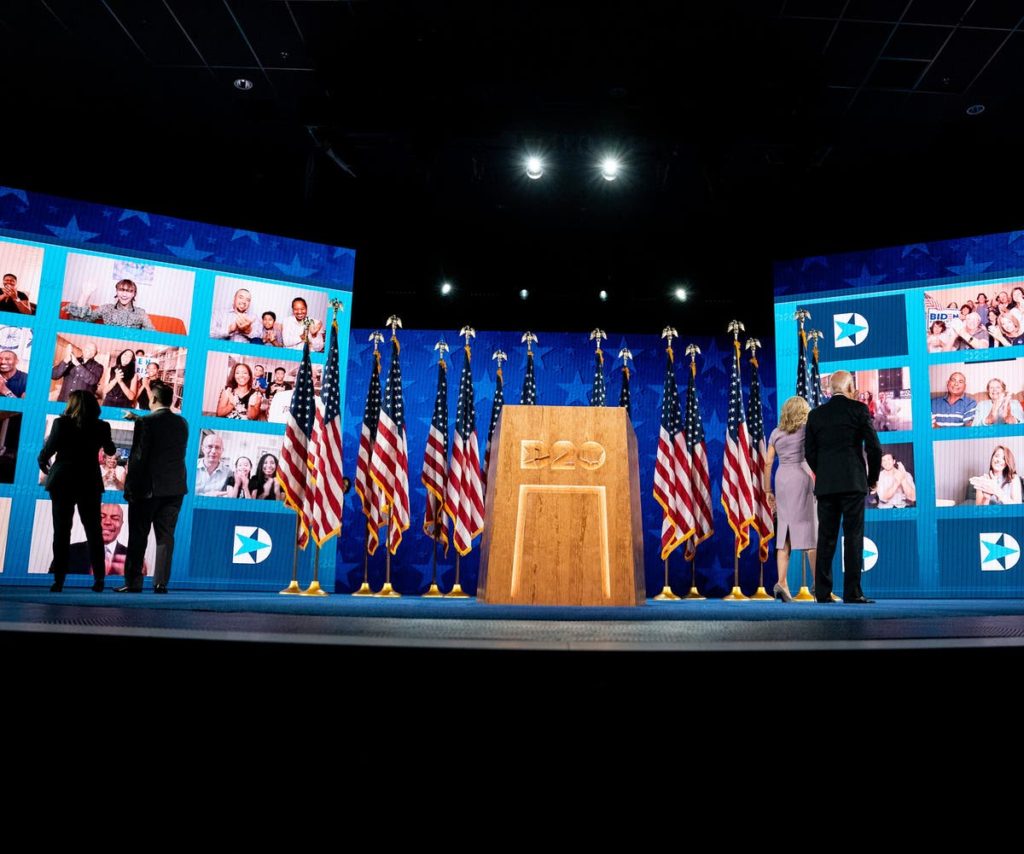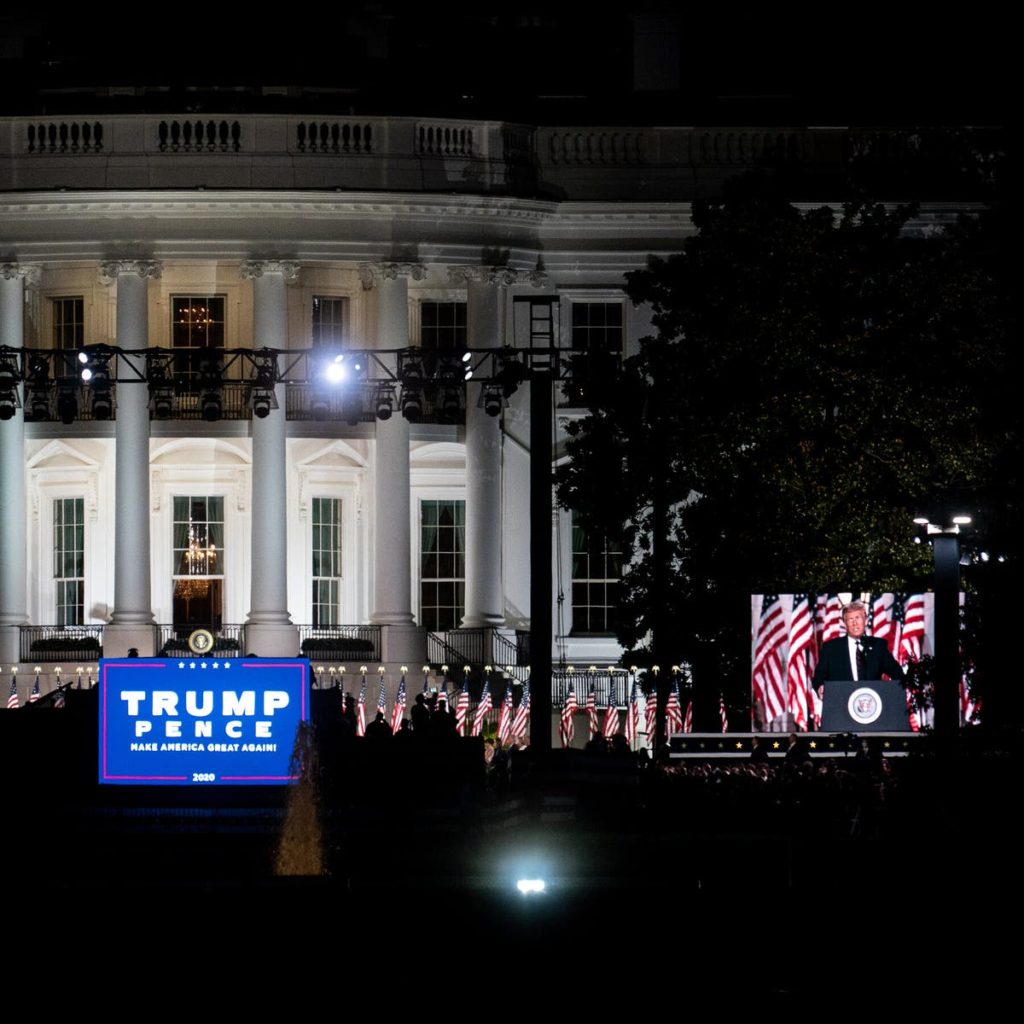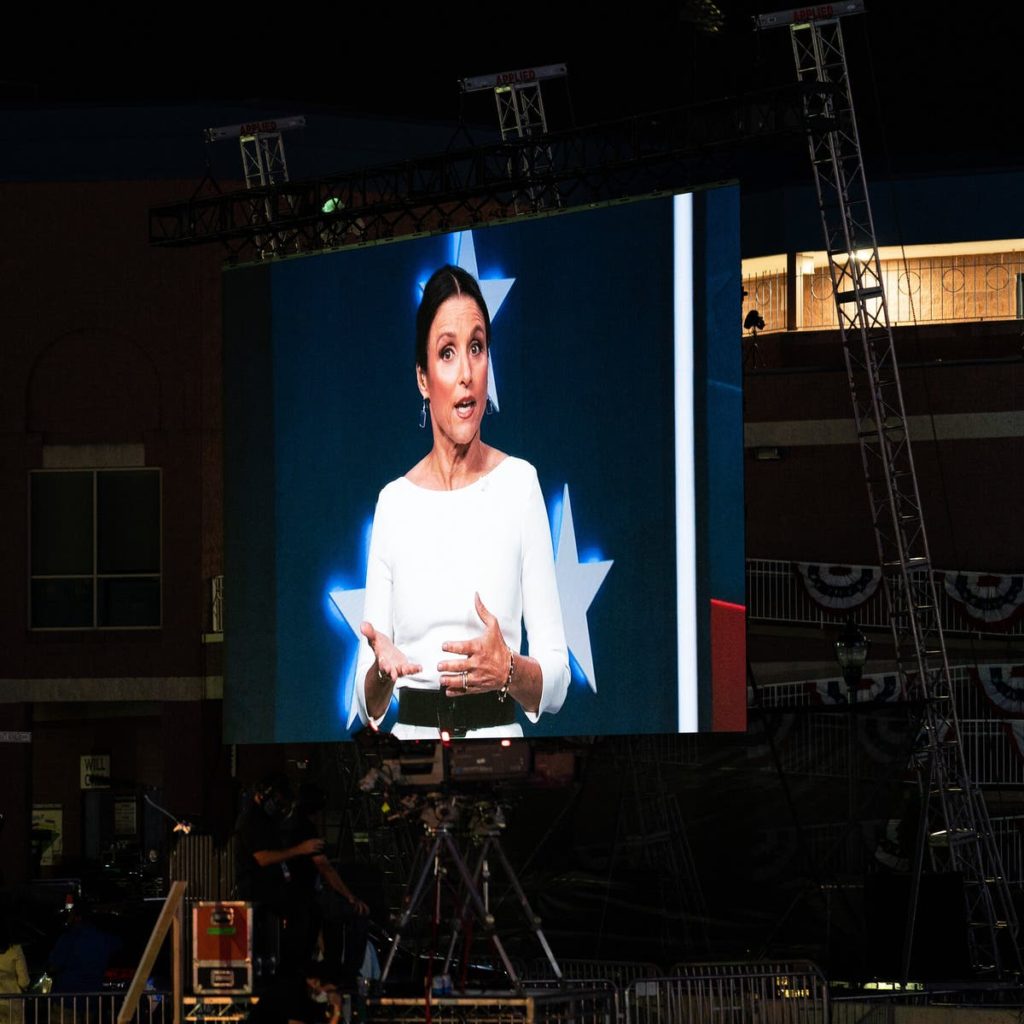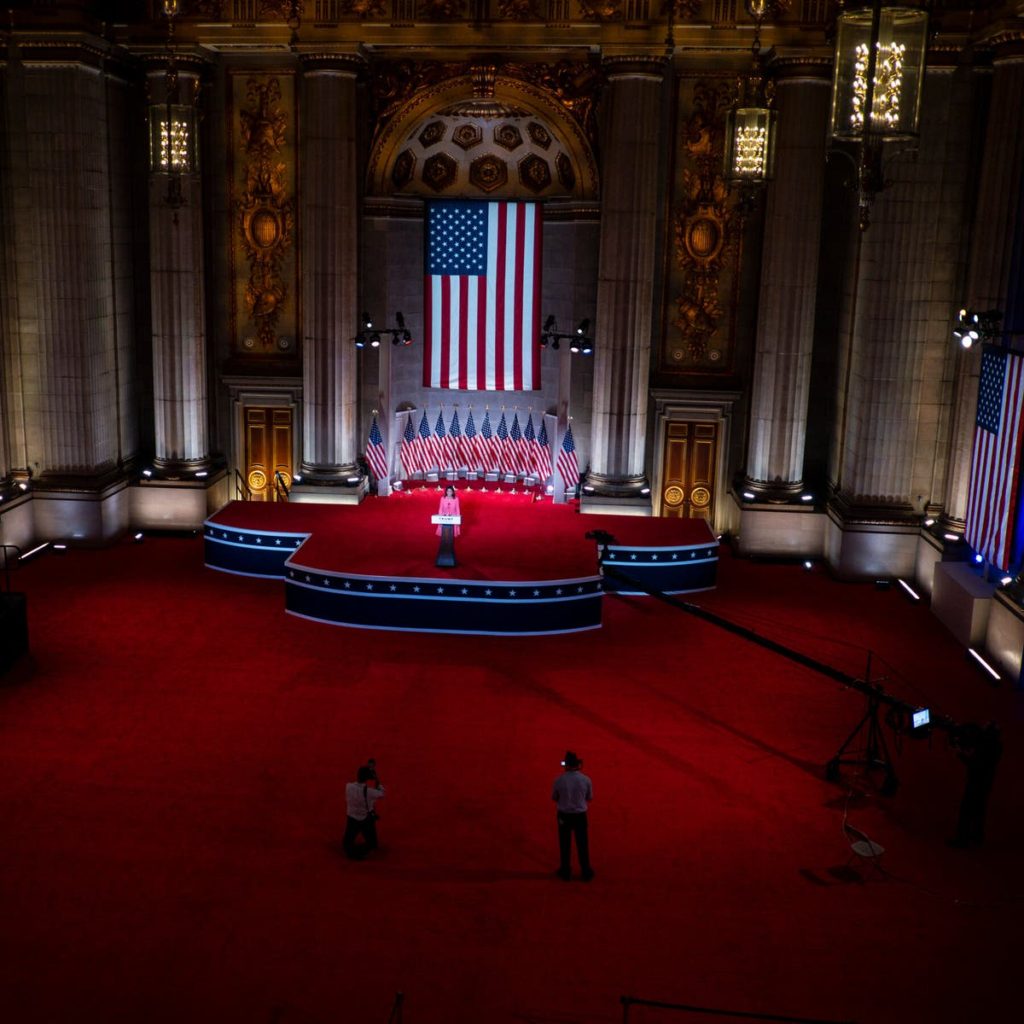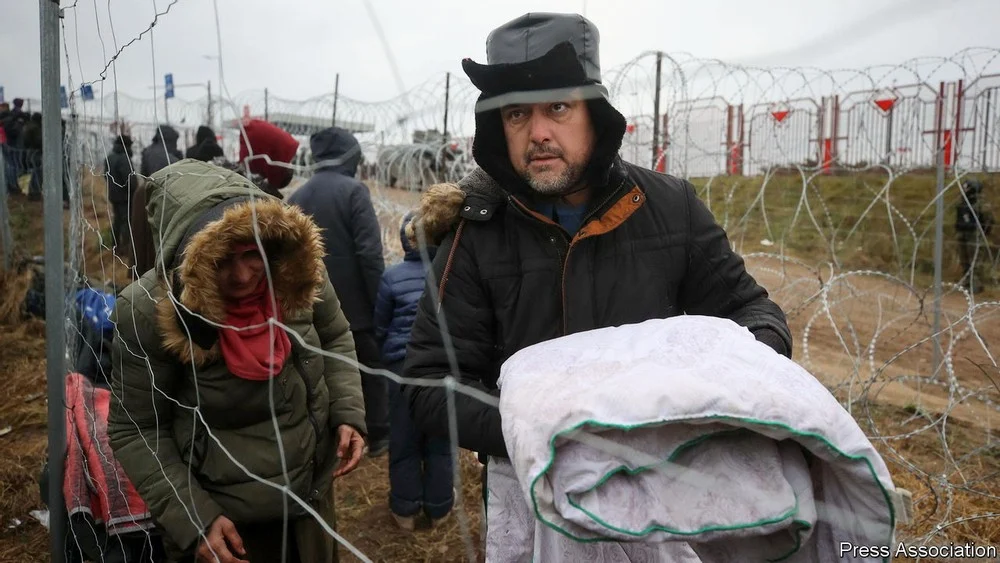Ratings were down and polls barely budged. Did the August conventions offer a road map for saving a flailing political institution?
After 18 hours of speeches by the candidates, testimonials from former presidents and generals, poignant appeals from voters, a cross-country nominating roll call, opera on a White House balcony and fireworks over the Washington Monument, the verdict is in on the national political conventions.
Ratings were down. Polls barely budged. And all of that costly, patriotic pageantry and Hollywood-style production were eclipsed within a day by the next lurch in the relentless news cycle — in this case, protests in Portland, Ore., and Kenosha, Wis.
Political conventions had been on life support for a while. But this year may well be remembered as the end of conventions as we know them.
The four-day ritual of the past — droning speeches in front of an arena of partisans — finally seems ready to surrender to shorter attention spans, Twitter, the fading influence of television networks and voter skepticism of politicians and the people who cover them. If this year is any indication, future political conventions will move beyond the traditional, dusty productions anchored to a single stage in a single city, dominated by a parade of elected officials and party elders.
Think fewer and shorter speeches, notwithstanding what President Trump did this year.
And is that so bad?
“I don’t think conventions will ever go back to the way they were,” said Stuart Stevens, a media adviser and strategist for Republican presidential candidates for more than 20 years. “It’s an example of an acceleration of trends that were in place already. It is highly problematic to get people together like that. It costs a lot of money.”
And by 2024, it’s highly possible that the broadcast networks — which have already cut back to an hour of coverage each night from the days of gavel-to-gavel coverage — may trim even more given the drop in ratings and long stretches of what were, in effect, highly produced political advertisements that filled the space between speakers.
“I don’t think anything is going to convince the money managers at the broadcast networks that it’s worth the money to go back to the old ways,” said Ted Koppel, the longtime anchor of ABC “Nightline” who covered his first convention in 1964 and has long been skeptical about the news value of these scripted gatherings. He added: “I don’t think things will ever return to the way they were.”

While President Trump’s decision to appropriate the White House as a backdrop for his acceptance speech was ethically dubious and legally suspect, the setting was certainly memorable. Erin Schaff/The New York Times
The death of the American political convention has been a persistent — though overstated — story line for years. In truth, it is difficult to imagine them ever disappearing completely.
They help fire up the party’s most fervent voters (though perhaps not so much this year) and can gin up contributions from viewers. Joseph R. Biden Jr., the Democratic nominee, had one of his best nights of fund-raising the night he gave his acceptance speech. And they can be fun for attendees: There is a deep attachment by delegates and the news media to these four-day, expense account-paid extravaganzas of politicking, networking, celebrity-spotting, parties and open bars.
“There’s still the political business to take care of, there’s still the yearning to celebrate the nominee, there’s still the wanting to be there for the launch of the campaign,” said Mary Beth Cahill, the chief executive officer of the Democratic National Committee. “That will come back. But there will be a demand that the convention be more inclusive. It took it from being in a room to being staged across the country in a way that I thought was illuminating.”
But there’s a new and younger audience of voters, more partisan and less patient, who are not about to drop their phones and sit in front of televisions to watch networks cover an event where the outcome is largely predetermined. And it seems that Democrats and Republicans are taking a lesson from the positive reviews that greeted changes forced by staging a convention in the middle of a pandemic.
These just completed conventions, in their best moments, showed the power of a fast-paced speaker lineup, visually arresting and ever-changing backdrops and emotionally powerful stories — like Brayden Harrington, a teenager with a stutter, for the Democrats, and the parents of Kayla Mueller, who was kidnapped and killed by the Islamic State in Syria in 2015, for Republicans. It is no small matter that audiences watched those heartbreaking speeches without the distracting noise of a restless audience. And no television station, it appeared, dared switch away from these speeches to some skirmish on the convention floor — since there was no convention floor.
“The most recent format was exponentially better in terms of reaching people with a disciplined message,” said Stephanie Cutter, who ran the Democratic convention. “People pay attention more if you’re speaking directly to them, rather than a cheering crowd in front of you. The nature of the remarks are much more intimate and focused if you’re trying to reach someone sitting on their couch at home versus playing to a crowd in front of you.”
While Mr. Trump’s decision to appropriate the White House as a backdrop for his acceptance speech was ethically dubious and legally suspect, the setting was certainly memorable, as was the tailgate parking lot celebration that awaited Mr. Biden after he gave his own acceptance speech. So were the varied celebrity hosts that led the Democrats every night — and their picture-postcard roll call that allowed housebound Americans an opportunity to travel the country, if virtually. Roll calls are notoriously deadly during conventions but may be better if they are always done virtually.

A series of celebrity hosts, including Julia Louis-Dreyfus, led the Democrats every night. Erin Schaff/The New York Times
Given that, who would want to return to tedious eight-minute speeches by dozens of political candidates and down-ballot officeholders, ignoring the “time’s up” flashing red warning light? Officials in both parties are already talking about plucking out what works from the old school — the grand acceptance speeches in front of a cheering crowd — and packaging them with the sleek new-school successes of 2020.
“My guess is four years from now, it will be some sort of hybrid,” said Russell J. Schriefer, who was the program manager for the Republican conventions of 2004 and 2012. “The story line has been the death of conventions. What we may have seen this year is the rebirth of the conventions.”
Donna Brazile, a longtime Democratic delegate and the manager of the 2000 presidential campaign of Al Gore, said she initially worried she would miss the hoopla at what would have been her 10th convention.
“But I don’t think we’re going to go back to a traditional convention,” she said. “I don’t know how you go back to four days in one city now that the rest of the country has had a part of it. This new convention playbook is going to get another round in 2024. It’s too good to pass up.”
Yet while it might be possible now to refashion something that is more visually interesting, that does not solve a more basic question of whether they still matter.
Television viewership this time was down roughly 25 percent from 2016, which is striking, even taking into account the imprecision of measuring audiences as more people have the option of watching it on streaming video.
Joel Benenson, a Democratic pollster who was a senior strategist for Hillary Clinton’s presidential campaign in 2016, argued that conventions were an opportunity to reach out beyond supporters. “It’s really your last chance to influence the swing voters you are trying to reach,” said Mr. Benenson, who himself barely watched the Republican convention.
But those swing voters might not have been there this year. And Fox News and MSNBC, cable networks with partisan fan bases, accounted for the biggest viewerships of the Republican and Democratic conventions, respectively, suggesting that each parties was speaking to its base while persuadable voters tuned out.

Many speakers for the Republican convention delivered a blend of live and pre-recorded remarks from the Andrew Mellon Auditorium in Washington. Pete Marovich for The New York Times
The appeal of a mostly virtual convention to party leaders is certainly clear. Shorter nightly programs means it’s easier to say no to people; pretaped speeches mean it’s easier to cut expansive speakers back. Bill Clinton’s address this year lasted for less than five minutes compared with 48 minutes in 2012. They do not have to worry about an off-script, live re-enactment of 2012, when Clint Eastwood, the actor, surprised Republican convention organizers by staging, in the middle of a 12-minute appearance, a conversation with an empty chair.
Most conventions are a competition between what the organizers want the public to see and what the news media wants to cover. “The networks are going to cut away,” Mr. Schriefer said. “They look for controversy. ‘Let’s see what Haley Barbour is doing in Mississippi.’ Or ‘Let’s go to the New York delegation and ask A.O.C. how she feels just speaking for a minute and a half.’” But A.O.C. — Alexandria Ocasio-Cortez, the congresswoman and liberal party leader — was presumably watching the convention at home this year.
And there is less of a need for party leaders to do what is politely known as donor management: dealing with big contributors who want a V.I.P. pass to get them onto the convention floor as well as private time with the candidates.
Mr. Schriefer said one thing that he thought would stick around was the climactic acceptance speech — and, yes, in front of a crowd.
“There’s an energy, an enthusiasm that you can’t replicate when you’re doing something in front of a camera by yourself in a room,” he said. “Everybody believed that Biden gave a good speech, that Harris gave a good speech. But we don’t know if they would have been better speeches in front of a large audience.”
FEATURED IMAGE: Joseph R. Biden and Senator Kamala Harris took in the virtual audience at the end of the Democratic National Convention in Wilmington, Del. Erin Schaff/The New York Times
By Adam Nagourney and Michael M. Grynbaum /The New York Times

